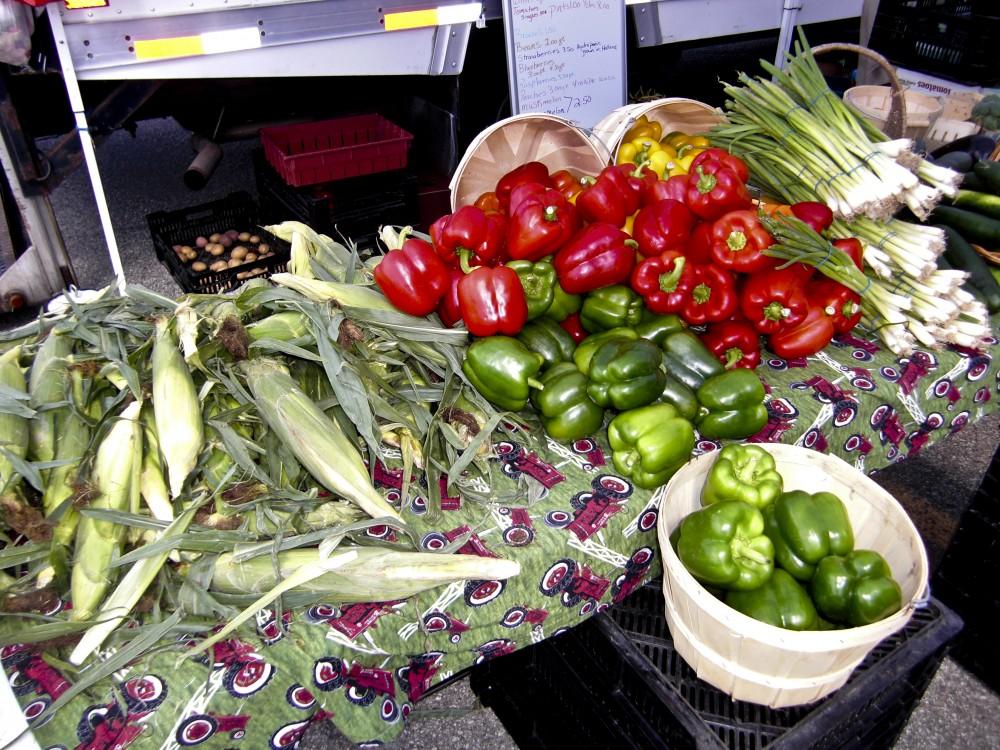Farmers markets boom in Michigan, on campus

Courtesy Photo / Nathan Mehmed Some of the produce at the Farmers Market
Aug 30, 2010
A row of white tents lined the Fieldhouse parking lot Wednesday wafting the aromas of fresh bread, specialty jerky, spices, cut flowers and homegrown produce.
Local growers sell their produce at farmers markets such as Grand Valley State University’s throughout the summer. According to the 2010 National Farmers Market Directory, released by the United State Department of Agriculture, Michigan ranks fourth behind California, New York and Illinois in the number of operating farmers markets.
According to a press release, the number of farmers markets increased 13 percent between 2008 and 2009. There are currently 271 markets in Michigan, representing the state’s second largest industry totaling $71.3 billion every year.
GVSU student Laura Barnhill expressed concern for local farmers as she explained that having more farmers markets increases the supply of produce and decreases the number of regular customers who return to her stand each week.
Michelle Flokstra of Green Thumb Acres in Tallmadge Township agreed. She said the money she makes goes to stores around the area and pays her bills.
“If you offer too much of something, someone suffers,” Flokstra said. “It hurts the small grower.”
With stands stretching across the parking lot Wednesday, there was no short supply of colorful fruits and vegetables.
The USDA also reported Michigan at second, behind California, in agricultural diversity, boasting more than 200 products.
The USDA press release concludes that farmers markets strengthen the economy.
“Dollars spent at farmers markets are more likely to stay in Michigan,” said Michigan Gov. Jennifer Granholm in the release.
Sharon Mull, who operated a jerky stand, said she enjoys selling at farmers markets because of the friendly atmosphere. It is in this atmosphere that buyers can ask questions and learn how the produce was grown or, in Mull’s case, made. She made her jerky in Warren, Mich., and said her jerky is not stringy or tough similar to store-bought jerky.
GVSU student Jessica Miller agreed as she came to the market for the quality of produce.
“Everything looks and smells really good,” Miller said, as she stood across from Flokstra’s stand filled with homegrown vegetables such as tomatoes and cucumbers. “You can see the freshness.”
Produce at farmers markets is fresher because sellers pick it a day or two before bringing it to market, Flokstra said. Beans lose Vitamin C in five days. It takes at least that long to ship to grocery stores.
“The beans there are roughage at best,” she said.
The USDA press release confirms Flokstra’s statement, noting five days is sufficient time for fruits and vegetables to lose 50 percent of their nutrients.
This is why people who shop at farmers markets may pay more, Flokstra said. In her opinion, a few dollars more is worth it for the quality of food.
Students can visit the GVSU farmers market every Wednesday from 10 a.m. to 1:30 p.m. in Parking Lot F through September.






















